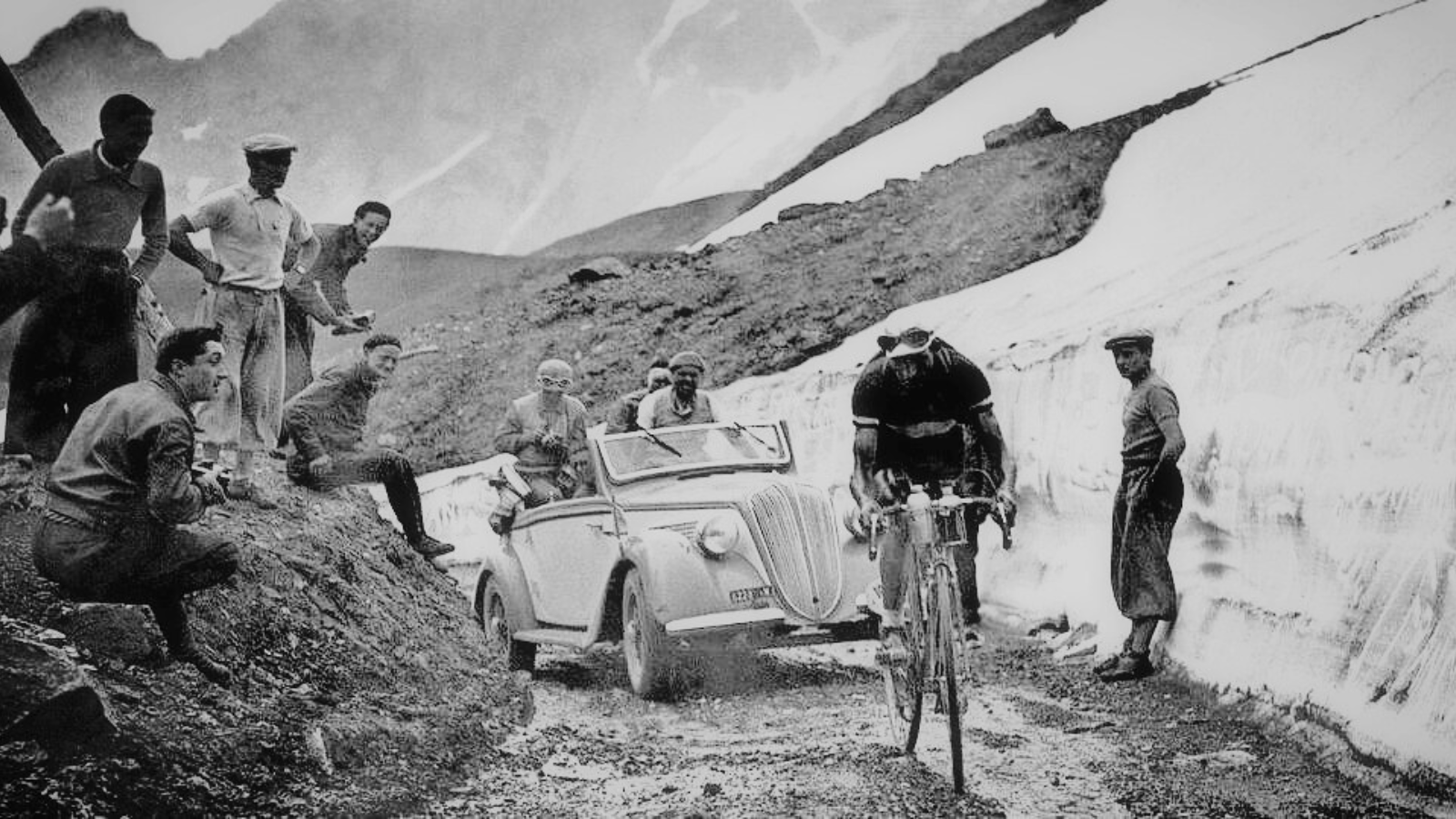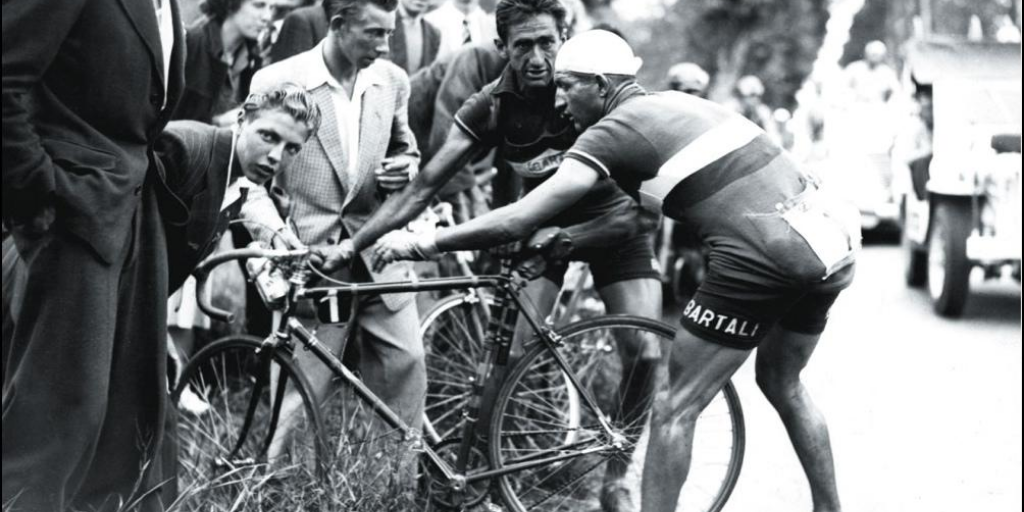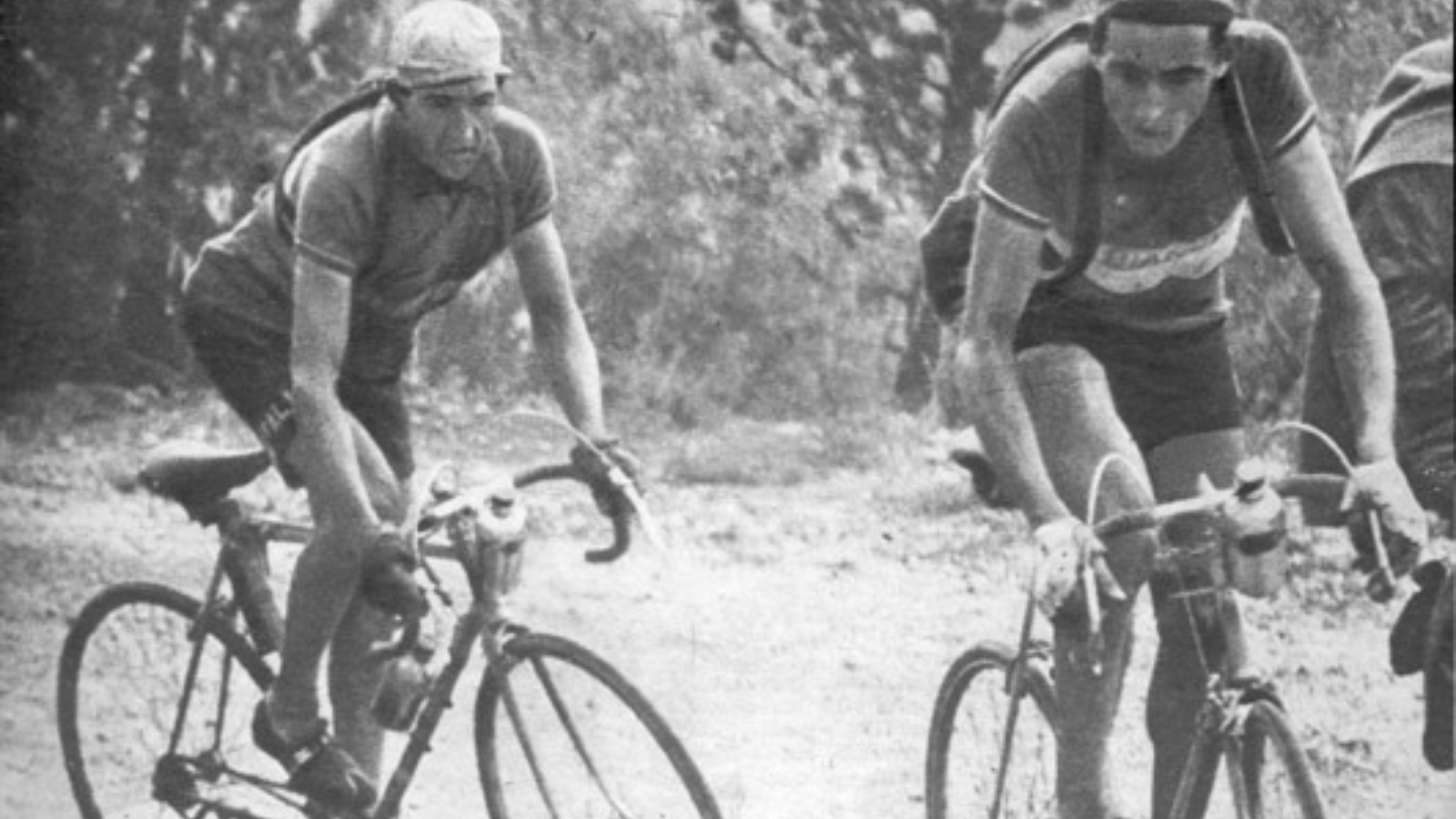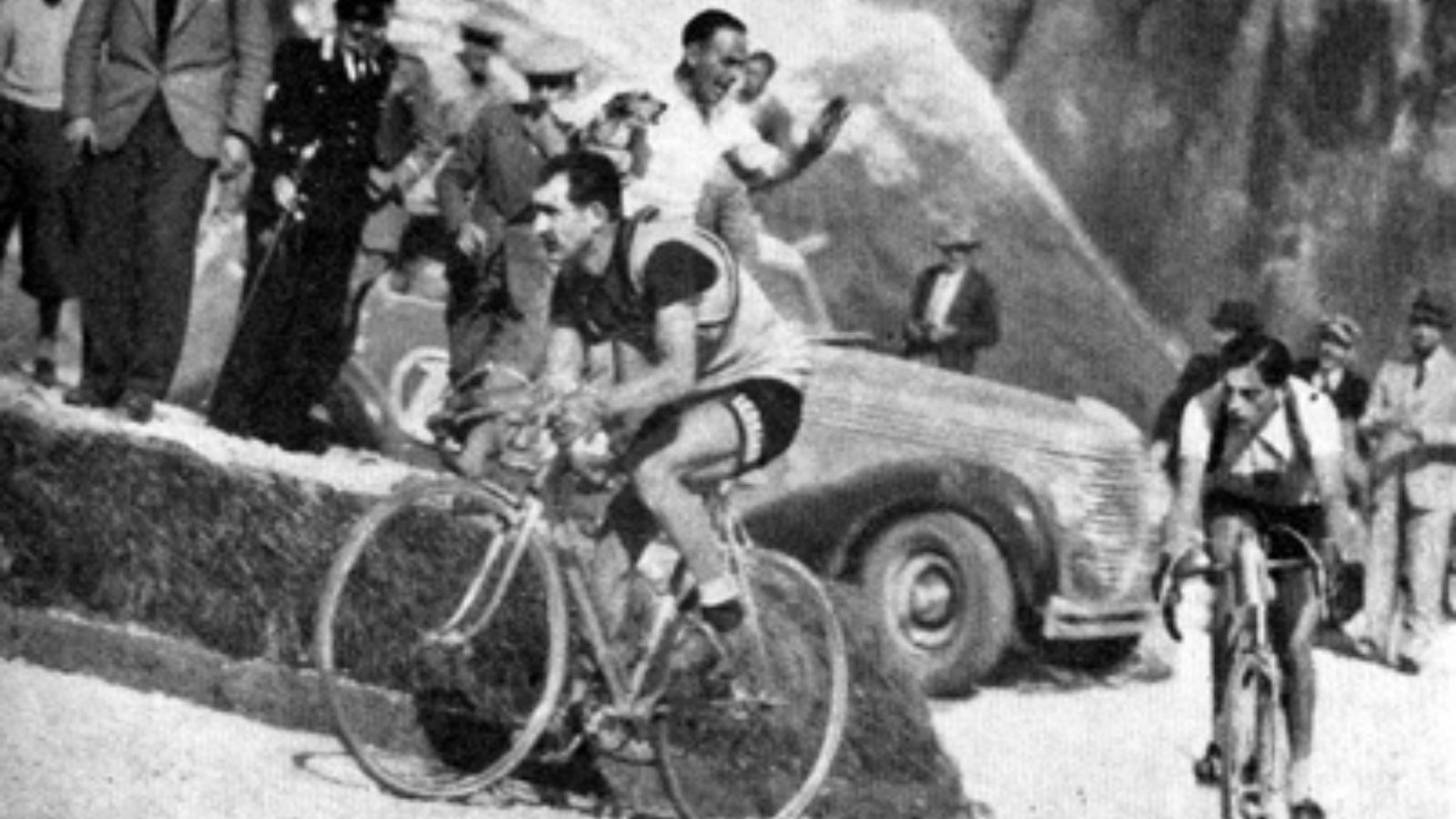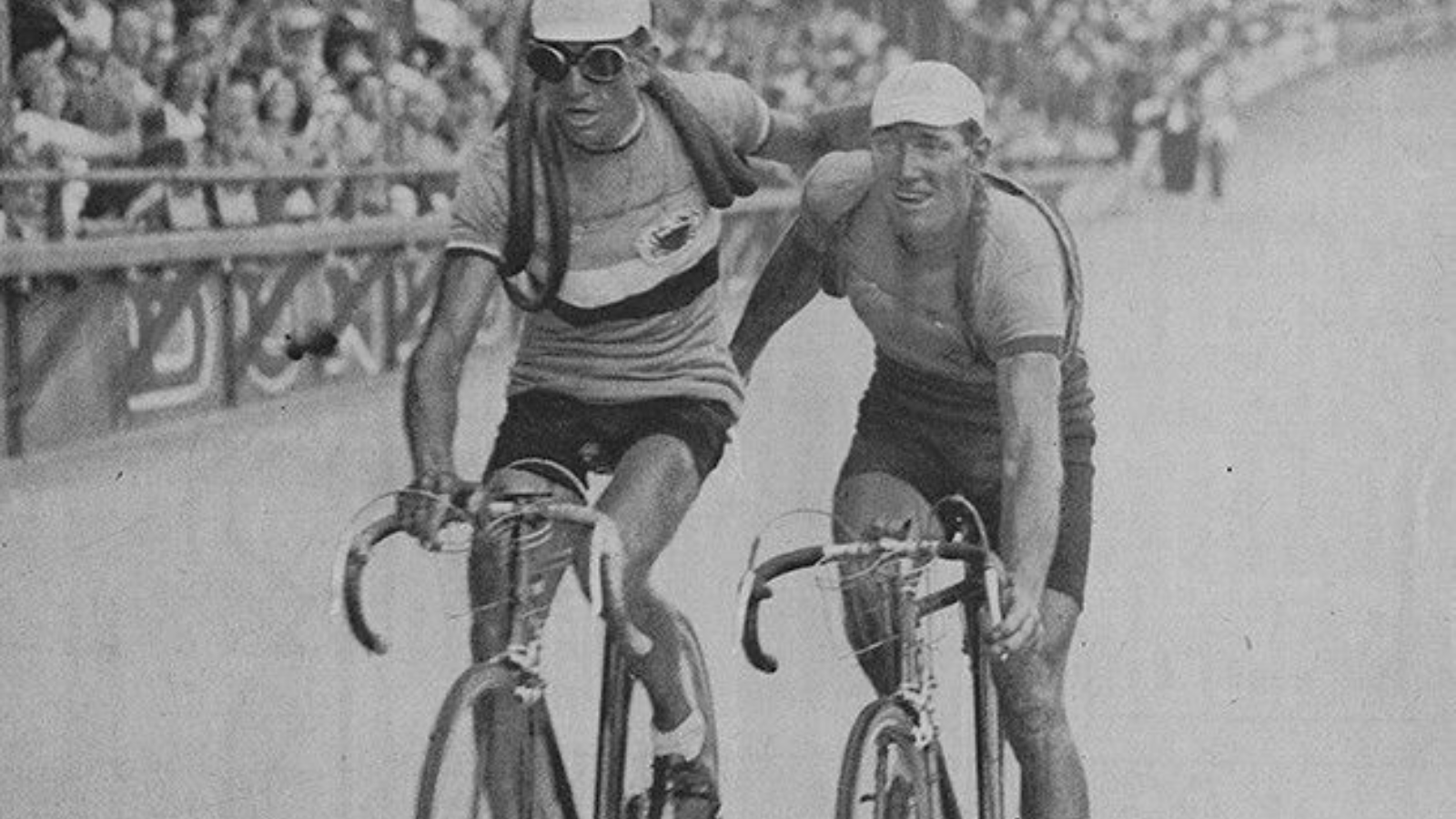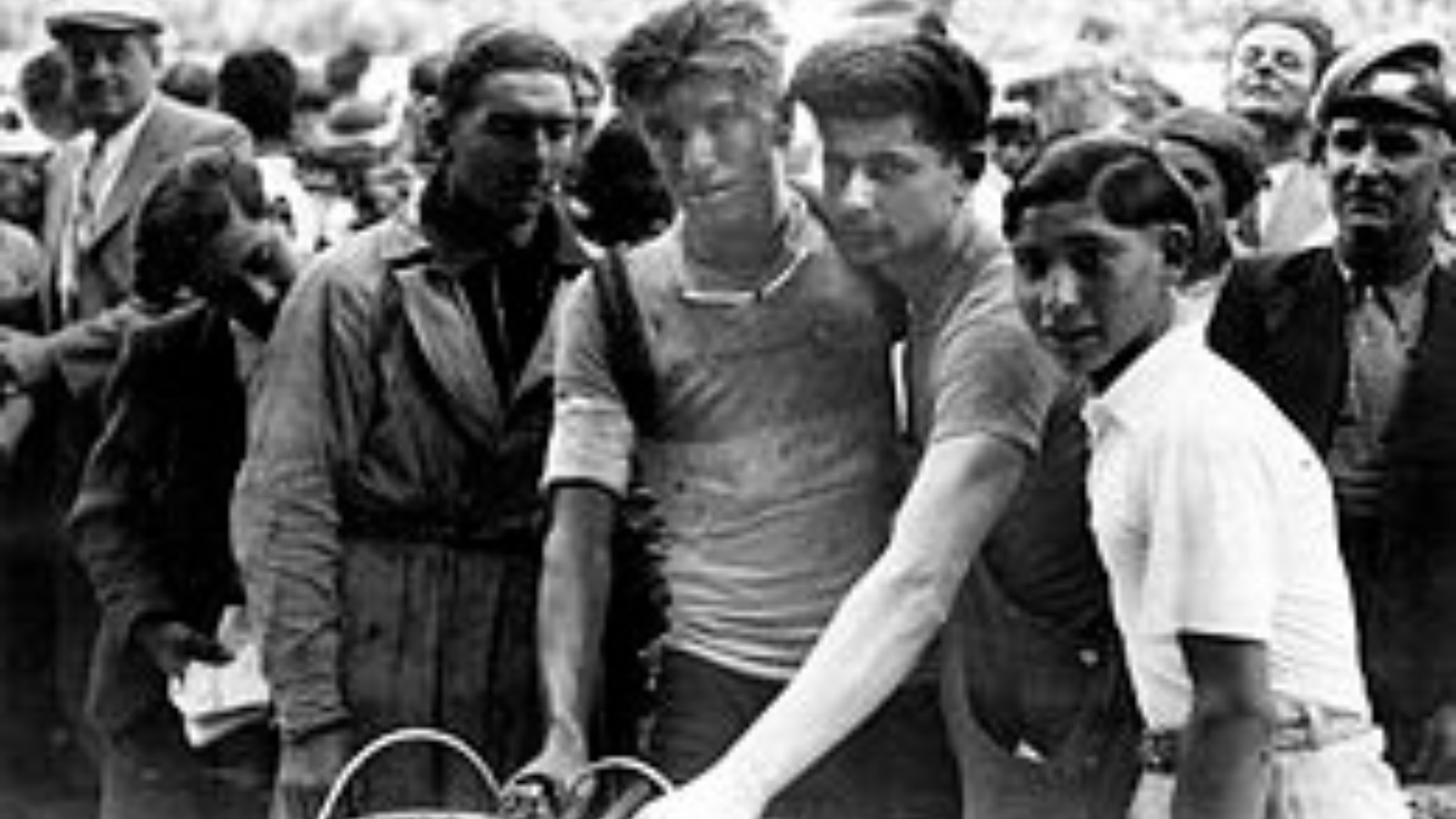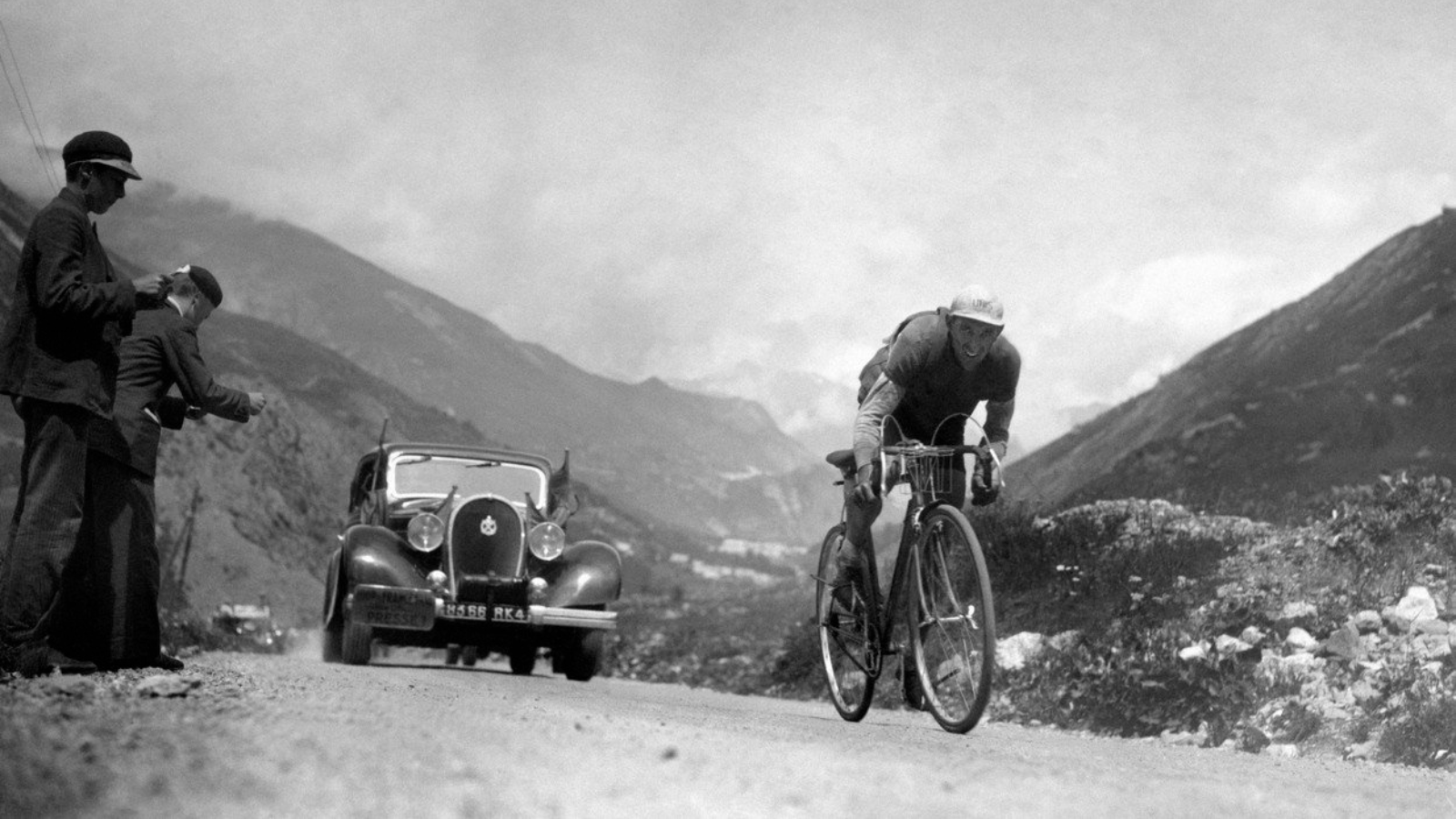Gino Bartali was already a two-time Giro d'Italia winner (1936 and 1937) when he first entered Tour de France in the summer of 1937.
The years before World War II witnessed the growing political-military tension in Europe. In 1936, the year when Germany violated the Treaty of Versailles (1919) by sending troops into the demilitarized Rhineland, Germany and Italy boycotted Tour de France. But in 1937 they were back again. Fascist leaders are usually obsessed with sport successes, and the prototype of all modern fascists leaders, Benito Mussolini was not different. He wanted an Italian Tour de France victory.1
After six mostly flat stages, the seventh day provided the favourites the first real opportunity to show their form. Stage 7th was 228 km long route between Aix-les-Bains and Grenoble, including Télégraphe and Galibier. Bartali took the stage and also the yellow jersey. Because he was leading the general classification with more than 9 minutes, he became the biggest favourite of the race.
But in the next stage, Bartali crashed badly. He tried to avoid a collision with his teammate and fell into a river. He was able to finish the stage and keep his leading position, but his form became less impressive day by day. He lost the yellow jersey after the ninth stage (still in the Alps, including Izoard, Vars, Allos) and finally he abandoned the race in the 12th stage.
Bartali came back in 1938, after he was forced not to participate in Giro d'Italia in order to race Tour de France with fresh legs. He won the race. Ten years later he era ed his second overall victory.
MORE GINO BARTALI
Four scandalous Tour de France editions
In its more than 120-year-long history Tour de France, the most famous road cycling race of the world witnessed good time and bad time either. It had plenty of glourious moments, but also some shameful ones. Here are the four (arguably) most scandalous editions in the history of Tour de France . 1904 – an … Read more
18 July 1949 – The epic breakaway of Coppi and Bartali
Due to the system of Tour de France was competed by national teams between 1930 and 1961, the spectators of the race witnessed Fausto Coppi and Gino Bartali riding in the same team during the late 1940s and early 1950s. This situation sometimes put the diplomatic skills of team manager Alfredo Binda to the test. … Read more
Fausto Coppi and Gino Bartali at Tour de France 1949 (Vintage cycling image of the day)
Tour de France in 1949 was one of the peaks of the great rivalry between the two Italian superlegends Gino Bartali and Fausto Coppi. Bartali has won the Tour already twice (1938 and 1948). Coppi never rode the race before, but he triumphed at the Giro d’Italia that year (it was his third victory after … Read more
Bartali and Coppi together in the Dolomites (Giro d’Italia 1940)
Vitange cycling image of the day on PelotonTales: Gino Bartali and Fausto Coppi in the Dolomites at Giro d’Italia 1940. Before Giro d’Italia 1940, Gino Bartali was already two-time Giro d’Italia (1936, 1937) and one-time Tour de France (1938) winner. He was the leader of the Legnano team in 1940, but had an ambicious and … Read more
MORE TOUR DE FRANCE IN THE 1930S
André Leducq and Antonin Magne crossing the finish line together (Tour de France 1938)
Before Greg LeMond and Bernard Hinault on the top of Alpe d’Huez, there were André Leducq and Antonin Magne in Paris. Two dominant French riders from the first part of the 1930s, both Leducq (1930 and 1932) and Magne (1931 and 1934) won the Tour de France twice. In the very last stage of Tour … Read more
Faces from the Peloton: Theo Middelkamp (1914-2005)
You would never guess in what kind of stage the first Dutch Tour de France stage winner, Theo (Theofiel) Middelkamp (1914-2005) gained his victory. In a mountain stage in the Alps, including Télégraphe, Galibier and Lautaret. Considering that even in the early 1950s, when Wim van Est, the first Dutch cyclist to wear the yellow … Read more
Fédérico Ezquerra on the Galibier (Tour de France 1936)
Col du Galibier was part of the 7th stage alongside with Thélégraphe and Lautaret at the Tour de France in 1936. (Usually, when the peloton climbs Galibier, they climb also Thélégraphe and Lautaret.) The 230 km long stage ended in Grenoble (hilltop finishes were introduced to Tour de France only in 1952), and a whole … Read more
Felicien Vervaecke’s bad luck (Tour de France 1936)
A Tour de France stage in the Pyrenees (especially, when it includes the big four, Peyresourde, Auspin, Aubisque and Tourmalet) always provides stories to tell. Belgian rider Felicien Vervaecke won the mountain competition of Tour de France twice, in 1935 and 1937. Before the 16th stage (Peyresourde, Tourmalet, Aspin, Aubisque) in 1936, he was 4 … Read more
- At this time, Italy had already a Tour de France winner cyclist, two-time champion (1924 and 1925) Ottavio Bottecchia. But the rider with very humble origin, who had learned to read as an adult, was a communist. His untimely death in 1927 is still an unsolved mystery. One of the theories is that he was murdered by Mussolini's hitmen. But this theory was never proved. [↩]
